#south jutlandic
Text



I can't believe I forgot to post the photos from my caravan camping holiday last year of the western themed communal area with the hot pink hotel facade.
#this place is in South Jutland Denmark i have no clue how they arrived at this aesthetic#only realized i never posted them when i went to reblog them lol
2 notes
·
View notes
Text
My ever growing collection of random thrift store tech has been upped with Working Microcassette Recorder with a 20 minute(?) tape in it


#old tech#side 1 is a weird unintelligible argument between a woman and a man#side 2 is like 3 guys arguing about a car's back wheels and breaks#everyone sounds very south Jutlandic
1 note
·
View note
Photo
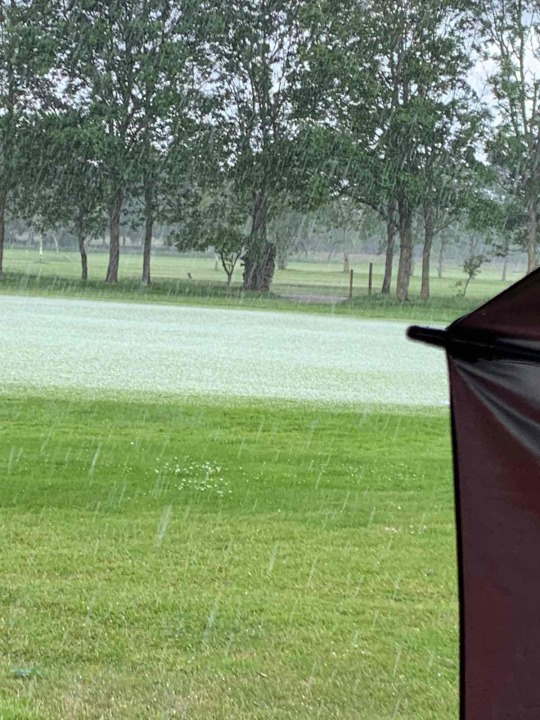
New Post has been published on https://publicgolfcourses.org/public-golf-courses/tonder-golf-klub-public-golf-courses-in-south-jutland-denmark
Tønder Golf Klub - Public Golf Courses in South Jutland, Denmark

Discover the best public golf course in South Jutland, Denmark at Tønder Golf Klub. the club offers brillant facilities, among others. Play public golf courses in Denmark at a very privileged location at acceptable prices.. Locate and play your preferred golf course with confidence at Tønder Golf Klub.
Contents
1 Where’s Tønder Golf Klub located?
2 Tønder Golf Klub Information
3 What’s are the Tønder Golf Klub Facilities?
4 How many holes does Tønder Golf Klub public golf course have?
5 What’s Tønder Golf Klub address?
5.1 Contact Tønder Golf Klub
6 How much does it cost this golf course at Tønder Golf Klub?
7 Book a public golf course today!
8 Best golf courses in Europe
8.1 Public golf courses in South Jutland, Denmark
8.2 Some ways to have more fun playing golf at Tønder Golf Klub!
Where’s Tønder Golf Klub located?
Check this location to find where you can practice golf in Denmark. Tønder Golf Klub offers a wide range of accessories, apparel, and footwear for men, women, and kids… You can also find golf course information, including real-time availability, at the club.
Tønder Golf Klub Information
Who doesn’t like a good game of golf? Here at Tønder Golf Klub, you will enjoy playing golf in a superb ambient, which is what everyone wants in a golf course in Denmark.
What’s are the Tønder Golf Klub Facilities?
For more information, please contact the Club https://tondergolfklub.dk.
How many holes does Tønder Golf Klub public golf course have?
Course Name: Tønder Golf Klub
Courses: 1
Holes: 18
What’s Tønder Golf Klub address?
Address: Tidsholmvej 6, 6270 Tønder
Airport: Sylt Airport
38.5km
Contact Tønder Golf Klub
How can I contact this club? See phone & mail details below:
[sociallocker id=”5402″]
By phone: +45 74734313
By mail: [email protected]
[/sociallocker]
How much does it cost this golf course at Tønder Golf Klub?
Green fee rates & variable rates subject to course occupation.
Book a public golf course today!
To make a booking at Tønder Golf Klub, simply fill in the form below.
Best golf courses in Europe
Find the best golf courses near you at a good price! These are the best public golf courses in your area. There are many golf courses in South Jutland, Denmark where you can book tee times and find directions to the course. List your course in Denmark for free:
Public golf courses in South Jutland, Denmark
There are approximately 50,000 golf courses in the world, with around 5,000 of them being public golf courses. If you’re planning a trip to another country and want to find a golf course to play at, it is safer to choose one of the public courses.
Some ways to have more fun playing golf at Tønder Golf Klub!
youtube
#1 course#1 courses#18 holes#back nine Tønder Golf Klub#Denmark public golf courses#DKK 250#Europe public golf courses#fairway Tønder Golf Klub#front nine Tønder Golf Klub#green Tønder Golf Klub#links course Denmark#links course Tønder Golf Klub#links Denmark#links Tønder Golf Klub#nine hole Tønder Golf Klub#play Tønder Golf Klub#putting surface Tønder Golf Klub#South Jutland public golf courses#tee Tønder Golf Klub#teeing ground Tønder Golf Klub#where is Tønder Golf Klub
0 notes
Photo
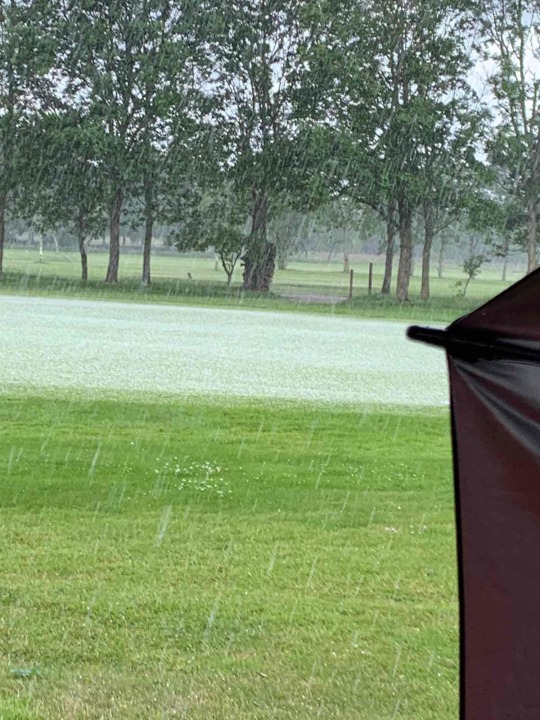
New Post has been published on https://publicgolfcourses.org/public-golf-courses/tonder-golf-klub-public-golf-courses-in-south-jutland-denmark
Tønder Golf Klub - Public Golf Courses in South Jutland, Denmark

Discover the best public golf course in South Jutland, Denmark at Tønder Golf Klub. the club offers brillant facilities, among others. Play public golf courses in Denmark at a very privileged location at acceptable prices.. Locate and play your preferred golf course with confidence at Tønder Golf Klub.
Contents
1 Where’s Tønder Golf Klub located?
2 Tønder Golf Klub Information
3 What’s are the Tønder Golf Klub Facilities?
4 How many holes does Tønder Golf Klub public golf course have?
5 What’s Tønder Golf Klub address?
5.1 Contact Tønder Golf Klub
6 How much does it cost this golf course at Tønder Golf Klub?
7 Book a public golf course today!
8 Best golf courses in Europe
8.1 Public golf courses in South Jutland, Denmark
8.2 Some ways to have more fun playing golf at Tønder Golf Klub!
Where’s Tønder Golf Klub located?
Check this location to find where you can practice golf in Denmark. Tønder Golf Klub offers a wide range of accessories, apparel, and footwear for men, women, and kids… You can also find golf course information, including real-time availability, at the club.
Tønder Golf Klub Information
Who doesn’t like a good game of golf? Here at Tønder Golf Klub, you will enjoy playing golf in a superb ambient, which is what everyone wants in a golf course in Denmark.
What’s are the Tønder Golf Klub Facilities?
For more information, please contact the Club https://tondergolfklub.dk.
How many holes does Tønder Golf Klub public golf course have?
Course Name: Tønder Golf Klub
Courses: 1
Holes: 18
What’s Tønder Golf Klub address?
Address: Tidsholmvej 6, 6270 Tønder
Airport: Sylt Airport
38.5km
Contact Tønder Golf Klub
How can I contact this club? See phone & mail details below:
[sociallocker id=”5402″]
By phone: +45 74734313
By mail: [email protected]
[/sociallocker]
How much does it cost this golf course at Tønder Golf Klub?
Green fee rates & variable rates subject to course occupation.
Book a public golf course today!
To make a booking at Tønder Golf Klub, simply fill in the form below.
Best golf courses in Europe
Find the best golf courses near you at a good price! These are the best public golf courses in your area. There are many golf courses in South Jutland, Denmark where you can book tee times and find directions to the course. List your course in Denmark for free:
Public golf courses in South Jutland, Denmark
There are approximately 50,000 golf courses in the world, with around 5,000 of them being public golf courses. If you’re planning a trip to another country and want to find a golf course to play at, it is safer to choose one of the public courses.
Some ways to have more fun playing golf at Tønder Golf Klub!
youtube
#1 course#1 courses#18 holes#back nine Tønder Golf Klub#Denmark public golf courses#DKK 250#Europe public golf courses#fairway Tønder Golf Klub#front nine Tønder Golf Klub#green Tønder Golf Klub#links course Denmark#links course Tønder Golf Klub#links Denmark#links Tønder Golf Klub#nine hole Tønder Golf Klub#play Tønder Golf Klub#putting surface Tønder Golf Klub#South Jutland public golf courses#tee Tønder Golf Klub#teeing ground Tønder Golf Klub#where is Tønder Golf Klub
0 notes
Photo

The pronoun "I" in traditional Scandinavian dialects
by jkvatterholm
I've aimed for this map to show the traditional area around 1900. It is similar in many ways still today, but some areas have shrunk a lot. Many Danes do no longer speak the genuine dialects for example, instead speaking standard Danish (incl. "jeg") with a local accent. This was starting already then of course, but on a much smaller scale. For example, Læsø, Djursland and Århus had already begun to move away from a at the time.
The spelling in the info should be close enough that IPA is not needed.
I've used tons of sources from this, including maps from regions or countries, trying to stitch them together and fill in any holes and correct discrepancies.
I can not separate forms with and without the final consonant (ja/jag) because that's impossible. Almost half the dialects may use both, depending on if the word is emphasised, on the end of a sentence or followed by a vowel etc.
Some spoken samples:
"ieg" in South-West Inland of Norway. (Press the speaker icon)
"i" area of Norway by Sweden.
Icelandic "ég" being pronounced "jeg".
Southern "i" area of Sweden.
Northern "i" area of Sweden.
The "je/ji" area besides it.
"je" on Swedish/Norwegian border.
Southern "æ" area of Denmark
Northern Jutland, Denmark
"e(g)" from Western Norway
"e" from Eastern Norway.
In standard languages:
Proto-Norse: ᛖᚲ (ek), ᛖᚲᚨ (eka)
Old Swedish: iak, iæk, iægh
Swedish: jag
Old Norse: ek, ec
Faroese: eg
Bokmål: jeg
Nynorsk: eg
Icelandic: ég
Old Danish: iak, iæk, iægh, æk, ak
Standard Danish: jeg
94 notes
·
View notes
Text

Stunning 1,500-Year-Old Gold Ring Unearthed in Denmark
An amateur metal detectorist in Denmark has unearthed a rare gold ring that may have belonged to a previously unknown royal family with ties to the Kingdom of France.
Lars Nielsen discovered the large, ornately decorated gold ring, set with a red semiprecious stone, while exploring Emmerlev, a parish in Southern Jutland, Denmark, according to a translated statement. The ring dates to the fifth or sixth century.
“Such a unique and one-of-a-kind find is completely surreal,” Nielsen said in the statement.
Researchers at the National Museum of Denmark determined that the piece of jewelry has much “historical significance” and may have belonged to local royalty connected to the Merovingians, a dynasty of Frankish kings who ruled over parts of what is now France, Belgium and Germany between the fifth and eighth centuries.
“The gold ring not only reveals a possible new princely family in Emmerlev, but also connects the area with one of Europe’s largest centers of power in the Iron Age,” Kirstine Pommergaard, an archaeologist and curator at the National Museum of Denmark, said in the statement.
“The gold ring is probably a woman’s ring and may have belonged to a prince’s daughter who was married to a prince in Emmerlev. Gold is typically [a] diplomatic gift, and we know that people have married into alliances.”

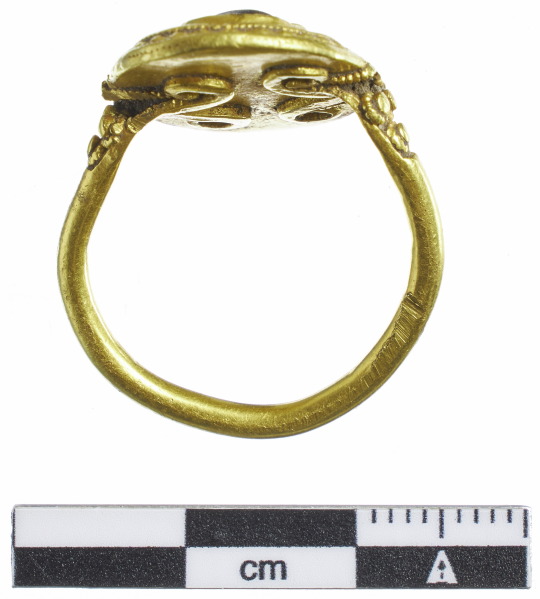
Exquisite craftsmanship of the gold ring
Researchers based the ring’s royal connection on its exquisite craftsmanship, which includes “well-executed spirals on the underside and trefoil knobs” where the ring and stone setting meet — a characteristic often associated with Frankish craftsmanship, according to the statement.
“It is an impressive level of craftsmanship that is difficult to imitate today,” Pommergaard said.
The ring’s red stone also offers clues to its ownership, since similar stones are well-known symbols of power in the Nordics, “while the elite gold rings of the Merovingians are typically set with a coin or a plaque, like a signet ring,” the researchers said in the statement. “This shows that the ring was to serve as a symbol of power in the Nordics.”
“Perhaps the princely family in Emmerlev had control over an area between Ribe [a town in Southwest Jutland] and Hedeby [a Danish Viking Age trading settlement in what is now Germany] and thus secured trade in the area,” Pommergaard said.
The ring’s location was a few miles away from previously found artifacts — including a collection of gold and silver coins, pottery and first-century golden horns — leading experts to think the item wasn’t lost but rather intentionally placed in the area.
“The person who had the ring probably also knew about the people who had the golden horns,” Anders Hartvig, a medieval archaeologist at Museum Sønderjylland, said in the statement.
“Maybe they were related. Together with other recent finds, it paints a picture that Southern Jutland has had a greater influence than previously thought, and that the Wadden Sea was not closed in on itself, but had an aristocratic presence with important trade links to the south.”
By Tasos Kokkinidis.

#Stunning 1500-Year-Old Gold Ring Unearthed in Denmark#Emmerlev#Southern Jutland#the Merovingians#Frankish kings#the Nordics#gold#gold jewelry#ancient jewelry#ancient artifacts#archeology#archeolgst#metal detecting#history#history news#ancient history#ancient culture#ancient civilizations
41 notes
·
View notes
Text
youtube
Ludolf Nielsen (1876-1939) - Romance, Op. 20 ·
Anton Kontra, violin
Orchestra: South Jutland Symphony Orchestra
Conductor: Frank Cramer
3 notes
·
View notes
Note
Where is the line between dreadnaught and super dreadnaught?
Gun size? Tonnage?
That's a good question.
A super dreadnought is usually the refinement of the concept. But the definition can vary from country to country. Generally, these ships started the adoption of superfiring turrets, increased tonnage, and increased diameter of the main guns (14 or 15 inches).


Just like how the British Royal Navy kicked off the naval arms race with HMS Dreadnought, this new chapter was started with the Orion Class.


For the US Navy, it started with the New York Class.
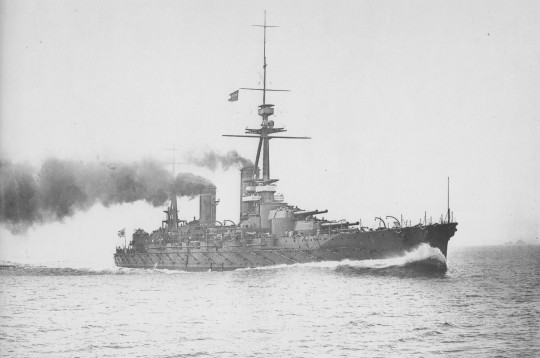
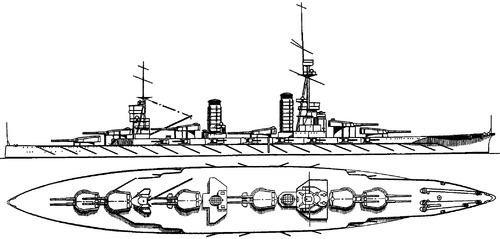
For the Imperial Japanese Navy, it was the Fusō Class.

For the French Navy, Marine Nationale, it was the Bretagne class.
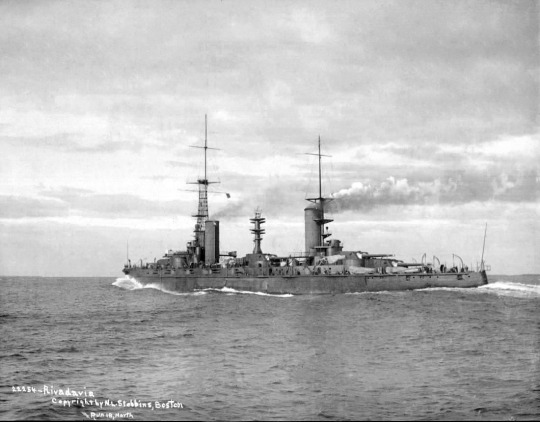

The Argentine Navy, Armada de la República Argentina, with the Rivadavia class. The only South American country to have their super dreadnoughts completed. Though, I would classify them as semi super dreadnoughts based on the turret layout and 12 inch guns.

The Germans were the last to start building super dreadnoughts, this being the Bayern class.
Later, the number of turrets decreased from 6 or 5 turrets to 4, adoption of triple gun turrets to keep the same number guns as previous classes, having the turrets along the centerline and adopting the all or nothing armor scheme, and towards the end of the 1910s, the adoption of 16 inch guns.
After WWI, the super dreadnoughts were slowly being supplant by a new class of battleships. These ships incorporated higher speeds (i.e. 23 to 25 knots), and the lessons learned after the Battle of Jutland. This led to increased size and tonnage, and better subdivision of the interior spaces to increase survivability. These ships would later be called as the fast battleships. But this topic is for another post.
Thanks for the ask.
NHHC: NH 57802, NH 55630
Mariner's Museum and Park: P0008/02-#156
source, source, source, source, source, source, source, source, source
#Super Dreadnought#dreadnought#battleship#warship#ship#smeghead4761#ask#united states navy#us navy#navy#usn#u.s. navy#Royal Navy#French Navy#Orion Class#new york class#Fusō Class#Imperial Japanese Navy#IJN#Rivadavia class#Argentine Navy#Bayern class#German Navy
43 notes
·
View notes
Text
The Boundless Sea
Sydney
11 June 2023
We headed into Sydney at about 9am this morning with a fairly full raft of activities.
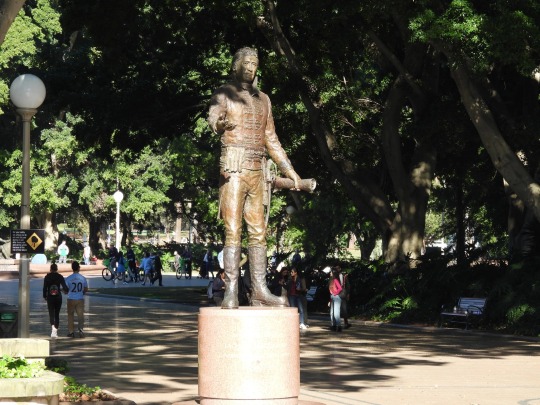
The first of these, which we arrived to at 10, was the Hyde Park Convict Barracks. This barracks was built by order of Governor Lachlan Macquarie in 1817, and today a statue of him stands across the road from the building, gesturing towards it. I can’t help but wonder if Macquarie would appreciate the somewhat dodgy statue of himself showing off the prison he built, but maybe that’s just me. Hyde Park Barracks is a thoroughly modern museum, in that it uses audio guides instead of placards. I generally can’t stand audio guides, but I soon worked out that I could just read the subtitles on the ipod thing they gave us, so it wasn’t a dealbreaker. The museum now includes a major focus on the effects of colonisation and the convict system on the indigenous peoples of New South Wales, which I quite appreciated. The one thing I might have liked more about was a little more information on the guards; but I appreciate that this is specifically a museum about the convicts, not the soldiers.
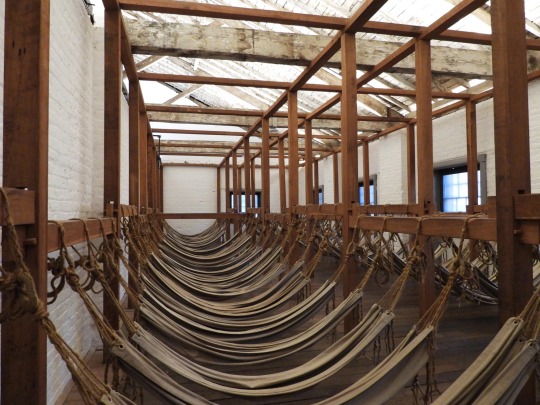
After the barracks, we walked through Hyde Park to the Anzac Memorial. This is Sydney and New South Wales’ primary war memorial, opened in the 1930s to commemorate the First World War. It’s not quite as grand as Melbourne’s Shrine of Remembrance - few things are - but it is still a magnificent structure and well worth a visit. The statue of the prostrate man in the Hall of Silence - positioned under the Hall of Memory, and visible through a hole in the floor which they call the Well of Contemplation - is particularly striking. Most war-related sculptures, at least in the post-WWI period, tend to be horizontal. Here, the prostrated man is vertical - the language of mourning.
Behind the Hall of Memory and down the stairs is the Hall of Service. The walls here are lined with soil samples from every town in New South Wales that has sent soldiers to war. There’s a circle on the floor, under a skylight, with more soil - these from the battlefields on which soldiers from New South Wales have fought. This goes as far back as the New Zealand Wars of the 1860s, but frontier conflict isn’t represented.

After visiting the Anzac Memorial, we proceeded by train to Circular Quay, and after stopping for a quick drink, caught the Manly Ferry out to Manly. This took us past the Martello tower at Fort Denison, upon which a young Charles Lightoller raised the Boer flag as a prank in the early 1900s, and the naval base at Garden Island. Both Canberra-class helicopter carriers were in port - these are the largest warships Australia has operated since the decommissioning of the carrier HMAS Melbourne. On the port side of the ferry, as one approaches the heads, the foremast of the cruiser HMAS Sydney (the first one) can be seen on the shore. To starboard, one can gaze out through the heads to the Pacific - from here, the sea is almost unbroken until you reach South America.

It is somewhere northeast of here that HMAS Australia lies on the seabed, decommissioned and scuttled under the terms of the Washington Naval Treaty. Australia was a battlecruiser - the same class as the unfortunate Indefatigable. She missed Jutland due to damage from a collision with the third member of the class, HMS New Zealand, and thus never saw a major combat action. Her existence, however, deterred German raiders from sailing too close to Australia during the war (although I’d argue that it was actually the entry of the Japanese into the war that really coerced the Germans into fleeing the Pacific altogether.)
We lunched in Manly, and I took a look at the war memorial there - possibly Australia’s oldest, erected before the war had even ended in 1916. I had a look at the beach, too, but it was absolutely packed. We caught the ferry back at around 3pm, and then returned to Hurstville by train.

The real journey begins tomorrow - we leave early for Sydney airport, and then we have the long, long flight via Bangkok to Heathrow. This will be a long undertaking, but I’m not certain there will be much to write about - but I shall make a valiant effort regardless.
#second world war#first world war#war#anzac memorial#sydney#hmas canberra#royal australian navy#convicts#cw colonialism
9 notes
·
View notes
Text


Princess Anne at the Commonwealth War Grave Cemetery in South Queensferry to help commemorate the centenary of the Battle of Jutland, on 28 May 2016.
#hot damn 🔥#ma'am 🥵🥵#anne in uniform#badass princess#princess anne#princess royal#brf#british royal family
29 notes
·
View notes
Text
This is an overhaul of an old post from 5 years ago, because I've added a bunch of stuff which unfortunately does not show up correctly anywhere but ON my blog.
Denmark, Scandinavia, and the Nordic region in Danish
Areas
The Nordic countries - De nordiske lande · Norden
Scandinavia - Skandinavien
Kingdom of Denmark · Danish Realm - Kongeriget Danmark · Danmarks Rige
The Kalmar Union · Union of Kalmaris - Kalmarunionen (1397 to 1523)
Countries
Denmark - Danmark
Sweden - Sverige
Norway - Norge
Finland - Finland
Greenland - Grønland · Kalaallit Nunaat (Greenlandic, lit. “Greenlanders’ land")
The Faroe Islands - Færøerne · Føroyar (Faroese)
Iceland - Island
Languages
Danish - dansk
Swedish - svensk
Norwegian - norsk · nynorsk · norsk bokmål
Finnish - finsk
(West) Greenlandic - (vest)grønlandsk · kalaallisut
Faroese - færøsk · føroyskt
Icelandic - islandsk
Minority languages
German - tysk (spoken by the German minority in North Schleswig/South Jutland)
Sámi - samisk (spoken by the Sámi people in large parts of northern Finland, Norway, and Sweden; the cultural region of Sápmi)¹
Inuktun · Polar Inuit - nordgrønlandsk · avanersuarmiutut (spoken in Northern Greenland, around Qaanaaq)²
East Greenlandic - østgrønlandsk · tunumiisut (spoken in Eastern Greenland/Tunu)²
Romani - romani (spoken by the Romani people)
Kven - kvensk (spoken by the Kven people in northern Norway)³
Sign Language - tegnsprog⁴
National demonyms⁵
Dane - dansker
Swede - svensker
Norwegian - nordmand (lit. “northern man”)
Finn - finne · finlænder (rare)
Greenlander - grønlænder · kalaaleq
Faroese · Faroe islander - færing · føroyingur
Icelander - islænding
German - tysker
Non-national ethnicities
Romani - romani
Sámi - same
Specifically Danish stuff
Places in Denmark⁶
Copenhagen - København
Aarhus - Aarhus · Århus (unofficial, but not incorrect spelling)
Jutland - Jylland · Hovedlandet (slang)
Funen - Fyn
Zealand - Sjælland · Djævleøen (slang, lit. “The Devil’s Island”)
Major dialects/regiolects based on location
Jutland - jysk
Zealand - sjællandsk
Funen - fynsk
Bornholm - bornholmsk
All islands (including Zealand + Funen, excluding Bornholm) - ømål (lit. “island language”)
Smaller areas that used to be Denmark
Schleswig-Holstein - Slesvig-Holsten⁷
Scania (Skånes län) - Skåne (around 970 to 1658)
Halland (Hallands län) - Halland (around 970 to 1645, legally 1658)
Blekinge (Blekinge län) - Blekinge (around 970 to 1658)
The Virgin Islands of the United States - Jomfruøerne · Dansk-Vestindien (outdated) · De Vestindiske Øer (outdated) (1672 to 1917)
Estonia - Estland (Hertugdømmet Estland 1206 to 1346, Øsel 1560 to 1645)⁸
Notes:
1) There are many Sámi languages and dialects, too many to list here.
2) Some argue that East and West Greenlandic are dialects of the same language and that North Greenlandic (Inuktun) is a dialect of Inuktitut.
3) Some do not recognise Kven as a separate language from Finnish.
4) Obviously, there is not 1 (one) Sign Language in the entire Nordic. There are Danish, Norwegian, and Icelandic Sign (which are all related), and Swedish and Finnish Sign (which are related to each other). Danish Sign is also used in Greenland and the Faroe Islands.
5) All nationalities and ethnicities fælleskøn (utrum)/common gender (uter).
6) These are just the major parts that you probably should know
7) The whole Schleswig-Holstein area has been much disputed and is hard to date. It was definitely NOT part of Denmark 1864-1920.
8) All of Estonia was never Danish, but various parts were.
If I screwed up or you have questions, feel free to shoot me a message!
#denmark#scandinavia#the nordic region#nordic countries#danish#langblr#language#dansk#danish vocabulary#original#in case you were wondering what was added#the answer is a BUNCH of minority languages#MORE notes#and numbers to the notes for your convenience
12 notes
·
View notes
Text
It DOESNT MATTER if the Israelis' distant ancestors really came from Palestine
Leaving aside that "indigenous" in a political sense tends to mean "current victim of colonialism or post-colonial structures" and not "being originally from somewhere" (we don't usually call the French "indigenous") consider the following:
All Slavic people & their languages are thought to have originated in what is now Ukraine somewhere in the late middle ages and spread from there to everywhere they live today. Does that mean I can kick a Ukranian out of his house because I have a czech grandpa?
All the Bantu peoples are thought to have originated roughly in what is today Cameroon. Can any west or central African speaking a Bantu language kick out someone in Cameroon from their house? Or even a black person from the USA or the Caribbean?
All the Germanic Peoples originated from Jutland peninsula (what is today Denmark & some bits of Northern Germany.) - can a guy in England, Austria or the USA kick a Dane out of his house?
The people of Australia, Canada, the eastern USA & to a lesser extent South Africa (where many alre also descended from Netherlanders) are all descended from the English. Can they all come to England & kick an English farmer out of his house?
(they can, however, still in practice sometimes get an unfair advantage over Hawaiians & Puerto Ricans, or put a pipeline or mine through a Native American or Australian Aboriginal's home, or expropriate a black person to build a highway... at least there its not based on directly racist laws, in theory a rich POC could do it too.But in practice the result still often screws locals for short-sighted business ventures, so there is some stuff to be fixed still...)
The Romance languages all descend from Latin. Can any Italian kick ppl out out of everything that used to be Roman, including France, England and Bavaria?
Can any Greek kick someone out out of everything that used to be the Byzantine Empire?
Spain belonged to the Islamic empire for a long time. Can a Moroccan go kick a Spanish person out of his house?
Spain does give Spanish nationality to south american spaniards, (to attract skilled workers & fix low population growth), which I know cause my dad insisted on getting it due to patriotic feeling, but while he could buy a house there & vote, he cannot kick anyone out. Not even out of the exact village where his ancestors lived just 100 years ago.
Heck, the czech grandpa I mentioned? His family was expropriated when Communism took over. After communism, my mom & her siblings got an offer to get their farm/house back, but ONLY if they find the ppl currently living in the house an equivalent place.
It turns out there was a family of Romani ppl living there & it would be hard to find them a big house due to housing discrimination - my mom & her siblings just decided to let them keep the house since they were actually using it & none of us was planning to move to rural czechia. It seemed mean to kick out ppl who are being discriminated & had themselves lived there for decades now, after all we have our own places. (and my mom has, like, a painting of the town's church hanging in her living room & remembers living there as a little girl, & has stories about it, including some lewd jokes about the shape of the mountains.)
They should probably do a similar program in Palestine, where Palestinian families can get still-standing houses back or $$ for rebuilding destroyed villages, but the current inhabitants get provided for. Though probably the state should have to find them a new place, not impoverished Palestinians themselves. In the communist expropriation example, chances are the original owner was richer than the current one, which is different in Palestine.
Let us also consider the difference between conquest & immigration.
Conquest means you disrupt the social order & impose your own rules. This is clearly what was done in Palestine.
Immigration is different - I'm all for the right to immigrate & for ppl to live where they want, but immigrating means you fold yourself into an existing society & follow the laws there. (many ppl explicitly immigrate to places where they like the laws more)
The problem is not jewish ppl living in Palestine because they want to live in the land of their distant ancestors, but rather taking over & oppressing everyone else.
No one would mind my dad going to live in Spain where his ancestors lived. Indeed they would probably rejoice, he is a skilled worker & pays lots of tax. But if he came with an army, rebranded the country "new Cuba", demanded that everyone speak Latin American Spanish & started oppressing the local farmers, that would be a very different issue.
Though of course I wonder how many ppl care more about special treatment & free stuff than they do about religion or "connection to the land". Many might end up going to some gated community in the USA if they have to be equal citizens with no special privileges.
3 notes
·
View notes
Photo
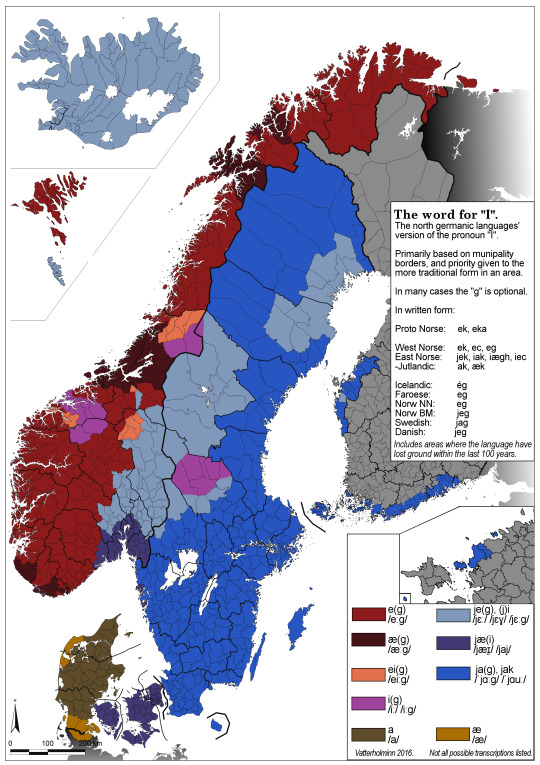
The pronoun "I" in North Germanic languages.
by jkvatterholm
The Proto Norse form was "ek" and "eka".
In the form "eka" the e split into "ja", making the pronouns in the norse period be "jak" and "ek" in standardised spelling. "Jak" was common in the east, as seen on the map. In Icelandic as well it was "ek". The change to "jeg" there is newer, also appearing in words like "fé" being /fjɛː/ and not /fɛː/.
The "je" form has also expanded a lot westwards. In Jämtland forms like "ek" seems to have been in use in the 18th century, while gone now. In urban dialects in western Norway it is expanding even today.
"Ek/eg" has not remained unchanged in Norway either. Some places have had a diphthongizationit into "eig" while others have turned into an "æg". With or without the g. Some even just say "I".
Dalarne in Sweden are worth mentioning, especially because of the Elfdalian dialect there using "ig".
In Jutland as well the breaking into "ja" never took place. In the middle ages forms like "æk" and "ak" existed, now being "a" and some places "æ".
Some examples of the word in use:
"Je" - Jämtland, Sweden.
"Je" - Ringerike, Norway.
"Eg" - Hordaland, Norway.
Various, Nothern Sweden.
"Ig" - Älvdalen, Sweden.
"Æ" - South Jutland, Denmark.
"Ei" - Sunnmøre, Norway.
"Æ" - Trøndelag, Norway.
"Jeg/ég" - Iceland
"Eg" - Faroe Islands
89 notes
·
View notes
Note
Are there any different accents inside of Denmark? Does P has a standard one?
And is her Swedish perfect now?
As Danes, you can tell what area they are from like
the south of Jutland is very different, they even have made a book "my first 100 Words on sønderjysk" (spelled in the way they would say it)
Then there is the Bornholm dialect
On the whole of sjælland, Lolland and Falster you speak mostly the same, not complete and I think it is very similar to middle jutland where Pernille is from.
People from Copenhagen do have their own dialect as well though
So, for me, Pernille has a pretty "standard" dialect, even though you can hear she is from Jutland.
About her Swedish, she speaks Swedish fluently, I think, but with a very heavy danish dialect
3 notes
·
View notes
Text
youtube
Emil Hartmann (1836-1898) : Piano Concerto in F Minor, Op.47 (1891)
00:00 Allegro 09:30 Canzonetta (Andante) 15:18 Finale (Allegro)
Matthias Aeschbacher (conductor) with Oleg Marshev (Pianist) and the South Jutland Symphony Orchestra
3 notes
·
View notes
Text

Schleswig-Holstein is the northernmost of the 16 German states. Its capital is Kiel; other larger cities include Lübeck and Flensburg. Historically, the name can also refer to a larger region, containing both present-day Schleswig-Holstein and the former South Jutland County in Denmark. Lübeck was the center of the Hanse, and its city center is a World Heritage Site today. Thomas Mann was born here. The Duchy of Schleswig/Southern Jutland was originally an integral part of Denmark, but was in medieval times established as a fief under the Kingdom of Denmark, with the same relation to the Danish Crown as, for example, Brandenburg or Bavaria vis-à-vis the Holy Roman Empire.
In the western parts, there are lowlands with virtually no hills. The North Frisian Islands, as well as most of the North Sea coast, form the Nationalpark Wattenmeer (Wadden Sea Nationa Park), which is the largest national park in Central Europe. Germany’s only high-sea island, Helgoland, is situated in the North Sea. The Baltic Sea coast to the east is marked by bays, fjords, and cliffs, with rolling hills and lakes. Islands are Fehmarn, Rügen, Usedom, Poel, Ummanz und Hiddensee.
The longest river is the Elbe; the most important waterway is the Kiel Canal which connects the North and Baltic Seas. The region has been strongly Protestant since the time of Reformation. Nowadays, members of the Lutheran / Evangelical Church make up 53% of the population, Catholics only 6%, and 41% of the population is non-religious or other.
Schleswig-Holstein combines German and Danish aspects of culture. The castles and manors in the countryside are the best example for this tradition; some dishes like Rote Grütze (Danish: Rødgrød) are also shared, as well as surnames such as Hansen, DIederichsen, etc. The most important festivals are the Schleswig-Holstein Musik Festival, an annual classic music festival, and the Lübeck Nordic Film Days for movies from Scandinavian countries. The annual Wacken Open Air festival is considered to be the largest heavy metal festival in the world.
Kiel Week is an annual sailing regatta that has been held in Kiel since the end of the 19th century. It is considered one of the largest sailing events in the world. In recent decades, it has also developed into a folk festival in large parts of downtown Kiel, although the core of the event has always remained the sailing competitions. Thus, in addition to the sporting aspects, Kiel Week offers an extensive cultural program with over 2,000 individual events. These include performances by both international and local artists, who offer live music in around 500 concerts on some 20 stages. Every year, around 3 to 4 million guests visit Kiel Week, including numerous naval units from over 14 nations, more than 4,000 sailors from 47 nations and over a dozen city delegations.
2 notes
·
View notes